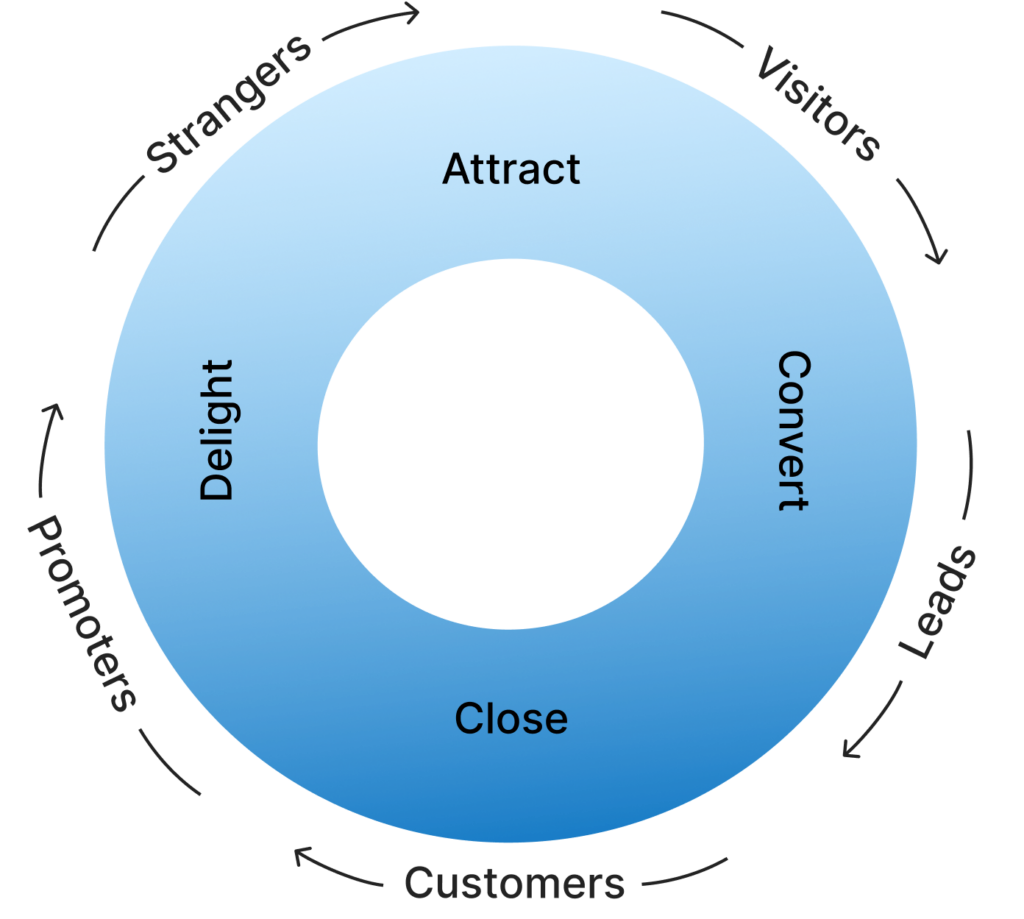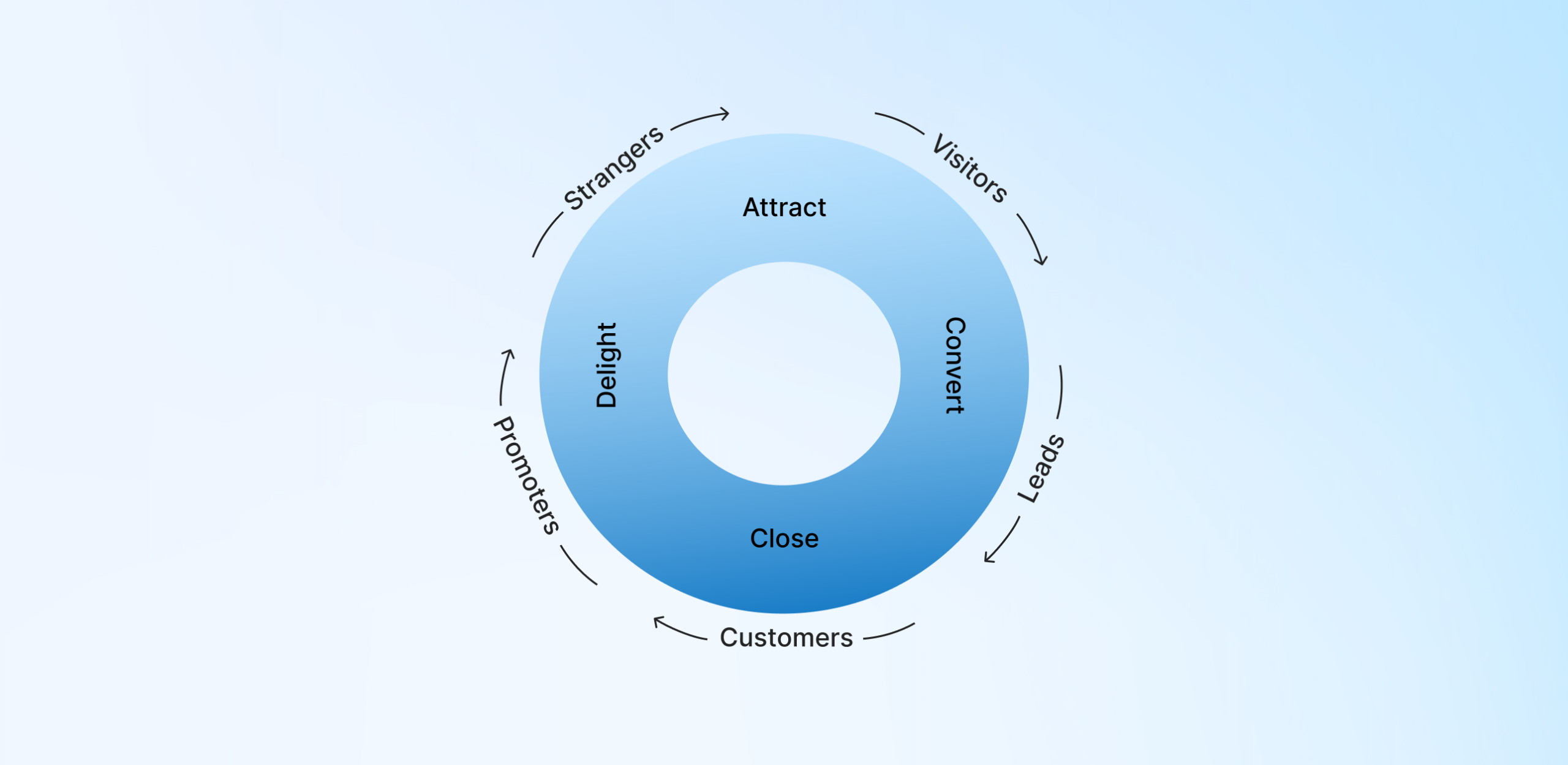Generating quality leads is the lifeblood of any successful business. But what exactly is B2B lead generation? It’s the process of identifying and attracting potential customers who are good fit and in the need.
It’s not just about filling your sales pipeline with potential customers; it’s about finding the right customers—those who have a need for your product or service and are ready to engage.
What is B2B lead generation?
B2B lead generation is the process of identifying and attracting the ideal customers for your product or service.
It’s a crucial activity for both marketing and sales teams in the B2B space, serving as the foundation for driving business growth.
The goal is to turn these potential businesses into actual customers, but it doesn’t stop there—nurturing these leads is crucial to building strong, long-lasting relationships.
Why important?
B2B lead generation is critical to a business’s success for several reasons:
- Understanding your TAM helps you identify the full potential market for your product.
- Quality lead generation ensures your sales team has precise contact details, making outreach efforts more effective.
- A steady stream of leads creates a reliable sales pipeline, crucial for forecasting and growth.
- Insights from lead generation can guide your content strategy, ensuring it resonates with your target audience.
- Consistent lead generation activities increase your brand’s visibility in the market.
- When done correctly, lead generation directly contributes to your bottom line
How to create a B2B lead generation cycle?

1. Develop your lead generation plan
The first step in the B2B lead generation process is to prepare your lead gen strategy. This involves defining your target audience.
You need to understand their needs and pain points. Then, figure out how your product or service can help them. You also need to determine the best channels and tactics to reach your target audience and attract them to your product or service.
2. Generate leads with lead gen sources
The next step is to generate leads using various lead gen sources. These could include online marketing channels, such as social media and email marketing. They could also include offline channels, such as trade shows and direct mail. The key here is to use the channels and tactics that are most likely to reach your target audience and get them interested in your product or service.
It’s important to note that these leads could be Marketing Qualified Leads (MQLs) or Product Qualified Leads (PQLs). It depends on how they’ve interacted with your brand.
3. Qualify leads
Once you’ve generated a list of potential leads, the next step is to qualify them. This involves assessing whether each lead is a good fit for your product or service and whether they are likely to become a customer.
You can do this in a variety of ways. For example, you can analyze their behavior on your website. You can also look at their interactions with your marketing materials and how they respond to your sales team’s outreach.
4. Close deals
The final step in the B2B lead generation process is to close the sales qualified leads. This involves converting the qualified leads into customers by persuading them to make a purchase.
You can do this through various sales techniques. They include demonstrating the value of your product or service. They also include offering special deals or discounts and providing excellent customer service.
How is B2B lead generation conducted?
B2B lead generation involves a variety of sales and marketing activities. Here’s a look at the most common methods:
Sales Techniques
Cold Calling
SDRs call leads, explain the benefits of the product or service, and qualify them for future engagement.
Outbound Email
SDRs reach out to leads via email, aiming to start a conversation and move them further down the funnel.
Social Selling
SDRs engage with potential leads on social media, particularly LinkedIn, to build relationships over time.
Sales Cadences
A combination of the above techniques to increase the chances of a lead responding.
Marketing Techniques
Growth Hacking
Using unconventional techniques like incentives, contests, and free tools to quickly create demand.
Content Marketing
Publishing and promoting valuable content (e.g., blog posts, videos, webinars) to attract and engage target audiences.
Account-Based Marketing (ABM):
Targeting key decision-makers within specific companies with personalized marketing campaigns.
What sources to use for generating B2B leads?
You can generate B2B leads from different sources. Effectively use them in your lead generation campaigns. This will significantly boost your business’s visibility and attract the right audience.
When it comes to generating B2B leads, LinkedIn reigns supreme. As the world’s largest professional social media platform, LinkedIn is a goldmine for B2B marketers. With over 900 million users, the platform teems with potential leads that are just waiting to be tapped into.
LinkedIn is not just a social network. It’s a professional hub where industry leaders, decision-makers, and potential customers converge. This makes it an ideal platform for your lead generation campaigns.
Its professional nature means users are more open to business propositions. This makes it a fertile ground for finding and nurturing potential buyers.
What’s more, LinkedIn’s powerful search and targeting capabilities allow you to zero in on your ideal customers with precision. You can filter by industry, job title, company size, and much more, ensuring your message reaches the right people.
In short, if you’re in the B2B space, LinkedIn is an indispensable tool for your marketing qualified lead generation efforts. It’s a source that, when used effectively, can provide a significant boost to your business’s visibility and growth.
Google Ads
Google Ads, formerly known as Google AdWords, is another powerful tool for B2B lead generation. It is a pay-per-click (PPC) advertising system where businesses can display their paid ads on Google’s search results page.
One of the main advantages of Google Ads is its wide reach. This provides an immense opportunity to expose your business to a vast audience.
Furthermore, Google Ads offers advanced targeting options. You can target leads based on their location, demographics, interests, and more.
Google Ads is a highly effective tool for B2B lead generation. By using it strategically, you can reach a wide audience. You can target potential leads more effectively. You can also measure the success of your campaigns accurately.
Facebook Ads
Facebook might not be the first platform that comes to mind for B2B lead generation, especially for SaaS companies. However, it can be a surprisingly effective tool when used correctly.
Facebook’s vast user base, which spans various industries and demographics, offers a broad pool of potential leads. The platform has robust targeting capabilities. It allows businesses to reach specific audiences based on factors such as location, interests, job title, and more. This makes it possible for SaaS companies to reach decision-makers who may be interested in their solutions.
Although it might seem counterintuitive, Facebook can be a potent channel for B2B SaaS lead generation. SaaS companies can tap into Facebook’s vast user base. They can do this by crafting targeted, compelling ads and monitoring their performance. This can drive high-quality leads to their business.
Lead Databases
B2B lead databases are a crucial source for generating potential customers in the business-to-business market. They are another important tool for finding new clients.
These databases are essentially repositories of information about businesses. They include their industry, size, location, and key decision-makers. They can provide a wealth of information that businesses can use to target and engage potential customers.
B2B lead databases can be both general and industry-specific. General databases include information about businesses across a wide range of industries. Industry-specific databases focus on a particular sector. The latter can be especially valuable if you’re operating in a niche market, as they can provide more targeted and relevant leads.
B2B lead databases can be an effective tool for lead generation. They provide valuable insights and help to target potential customers more effectively. However, they should be used as part of a broader lead generation strategy, complementing other sources and methods.
For instance, some of the best B2B lead generation databases include:
- Cognism
- Lusha
- LinkedIn Sales Navigator
- ZoomInfo
- Adapt
Lead Generation Agencies
Agencies are another valuable resource for B2B lead generation. They specialize in various marketing and sales strategies. They have the expertise and resources to help businesses’ marketing teams reach their lead generation goals.
Agencies can bring a fresh perspective to your lead generation efforts. They identify areas for improvement that you might have overlooked.
They can also provide a wide range of services. These include SEO and content marketing, social media management, and PPC campaigns. These services help attract and convert potential leads.
Agencies often have access to advanced tools and technologies that your business might not have. This can further enhance your lead generation efforts. They can also provide valuable insights and analytics to help measure the success of your lead generation strategies. You can make necessary adjustments.
Tools for B2B Lead Generation
In the complex and ever-evolving world of B2B lead generation, having the right tools at your disposal can make a significant difference. Here are three examples of tools that can help grow your sales pipeline:
1. HubSpot CRM: HubSpot CRM is a free tool that manages your sales pipeline. It allows you to organize, track, and nurture your leads and customers. It integrates with a variety of channels, which means you can manage all your data in one place. It also provides detailed analytics. They help you understand your sales process and identify areas for improvement.
2. LinkedIn Sales Navigator: LinkedIn Sales Navigator is a social selling platform that provides features like lead recommendations, advanced search filters, and insights on existing accounts and leads. It’s especially useful for B2B businesses, as it allows you to target the right buyers, understand key insights, and engage with personalized outreach.
3. Mailchimp: Mailchimp is an all-in-one marketing automation platform that helps small businesses market smarter so they can grow faster. As an email marketing app, you can use it to send out newsletters, manage subscribers, and track campaign performance. It also integrates with all the major e-commerce providers so you can use your purchase data to send personalized campaigns and better understand how your marketing affects your bottom line.
Remember, the right tools can significantly enhance your B2B lead generation efforts. However, they should be used strategically and in conjunction with a well-planned lead generation strategy.
Final tips
- Define your target audience: For effective lead generation, it’s crucial to define your Ideal Customer Profile (ICP) and Buyer Personas. The ICP identifies the type of companies that would benefit most from your product or service.
- Create valuable content: Content is king, a common saying – and it is true. Make every piece you create worth consuming.
- Optimize landing pages: Create custom landing pages. Highlight the benefits and features of your SaaS product. Optimize them with clear call-to-action buttons.
- Prepare sales funnel: The sales funnel represents the customer journey, from initial awareness to the final purchase. Preparing it involves mapping out this journey. Align your marketing and sales teams’ efforts accordingly.
- Track and analyze results: Track your efforts and analyze the results. Monitoring key performance indicators (KPIs) helps optimize your strategies.
Conclusion
The time has changed now. Technology workers who create potential users in accordance with the rules of the digital world have replaced the vendors who go door to door and market products.
You can create potential users through various methods and channels, according to your product or industry.
The aim is to generate more significant revenues by more sales reps generating more leads and achieving sustainable growth momentum.
Simply put, an effective SaaS lead generation strategy can get your competitors to look at you with envy. Just try one of the strategies above.





